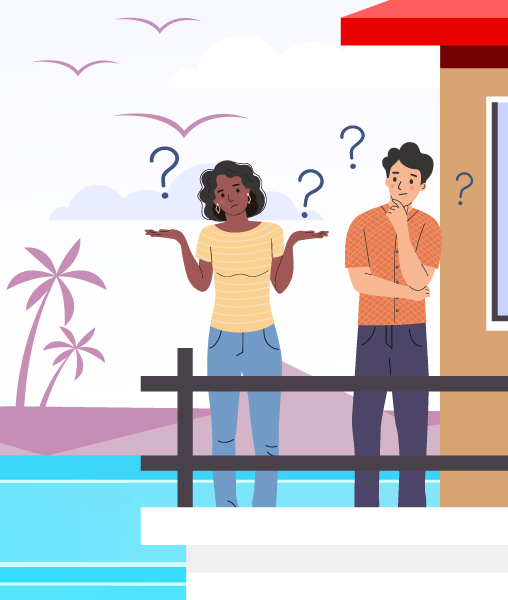What is Flood Zone AE?
- FloodPrice

- Nov 3, 2022
- 4 min read
Updated: Aug 6, 2025

Flood Zone AE is considered a high-risk flood zone due to its elevation and proximity to floodplains, lakes, rivers, and/or other bodies of water. If you are using a federally backed mortgage, flood insurance is required. Lenders mandate this coverage to protect their investment, and it also helps protect your property and peace of mind.
When it comes to flood risk, your address matters. FEMA uses flood zones to help identify areas that are more likely to experience flooding. One of the most common high-risk zones is Flood Zone AE. If your property is in this zone, it means you are in a lower-elevation area near lakes, rivers, or other bodies of water where flooding is more likely during storms or heavy rainfall.
FEMA works with local officials to map out these risk areas, which are known as Special Flood Hazard Areas (SFHAs). Flood Zone AE falls into this category. If you are buying a home in Zone AE or already live in one, it is important to understand what that means for your safety, insurance requirements, and financial protection.
Is Flood Zone AE in the 100-Year Floodplain?
A 100-year floodplain is an area that has a 1% chance of flooding in any given year. Flood Zone AE is within this area. While a 1% annual risk of flooding may not seem like a high probability, it equates to a 26% chance of flooding over the life of a 30-year mortgage.
Flood zone AE is one of the most common high risk flood areas. It differs from flood zone A in that flood zone AE is mapped by flood plain managers in your area to determine the Base Flood Elevation (BFE), while flood zone A has typically not been mapped for its Base Flood Elevation.
Does Flood Zone AE Require Flood Insurance?
If FEMA has designated your home as being located in Flood Zone AE, it is in a high-risk flood zone. If you have a federally backed mortgage, you will likely be required to purchase flood insurance by your lender. Also, any property with a flood zone designation of A, A1-A30, AH, or AO is also considered to be in a high-risk flood zone, and flood insurance will likely be required. To find out if your home is in an “A” flood zone, please visit our Flood Map Tool. Keep in mind that if any part of your property overlaps one of these high-risk flood zones, your mortgage lender will typically require you to purchase flood insurance.
How Much is Flood Insurance in Flood Zone AE?

The cost of flood insurance for a property in flood zone AE can vary greatly and is dependent on many factors. One factor is the Base Flood Elevation or BFE. During the mapping process, FEMA establishes a Base Flood Elevation (BFE), which is the anticipated elevation to which flood waters will rise during a flood. Carriers will compare the BFE to the elevation of the lowest level of the home, such as the first floor or the basement. If the elevation of the first floor is lower than the BFE, the rate will typically be higher. If you're buying a home in zone AE, consider obtaining a flood zone review from SecondLookFlood. They provide accurate FEMA Flood Zone Determinations and guidance, including disputing the flood zone, applying for a map amendment, and reviewing Preliminary Maps for potential updates and revisions.
Other factors used to establish the rate for the policy are the distance to water, the coverage requested, the age of the home, and more. It’s best to quote each property individually to get an accurate premium. Our online quote tool can find your NFIP and shop top-rated private flood insurance carriers to deliver you a great price!
How has the NFIP's Risk Rating 2.0 changed the relationship between flood zones and insurance rates?
With the implementation of Risk Rating 2.0, flood zones are no longer the primary factor in determining flood insurance rates. The focus has shifted from using large flood zones to analyzing the specific risk of the property. This change means that flood zones alone do not dictate the cost of flood insurance under Risk Rating 2.0. Instead, other factors are considered to determine the appropriate insurance coverage and associated premiums.
How does the private flood insurance market handle flood zones in determining rates?
Similar to the NFIP's Risk Rating 2.0, private flood insurance carriers also uses flood zones as a measurement to determine the necessity of flood insurance. However, the rates are not directly impacted by the flood zones themselves, but rather by factors such as distance to water, type of flood, frequency of flooding, elevation of the property, and other relevant considerations.
How can I save money on flood insurance for a home in Flood Zone AE?
The best way to save money is to speak to a flood insurance expert. If your flood policy is with the NFIP, a private flood insurance policy can be a good way to save money Our quote system uses true risk analysis to compare several flood insurance carriers to make sure we find the right flood insurance policy for your home. If you’d like us to compare the rates and do the shopping for you, give us a call!
Here are two clients that used FloodPrice to help shop for a lower rate for flood insurance:


Looking to save money on Flood Insurance? Get your quote online in minutes. Our online quote tool shows you rates from the NFIP and trusted private insurers side by side—making it easy to find great coverage at the right price.
Disclaimer: The information on this site is provided for general guidance and informational purposes only. We make no guarantees regarding the completeness or reliability of the content. All liability for any reliance on the information is expressly disclaimed.



